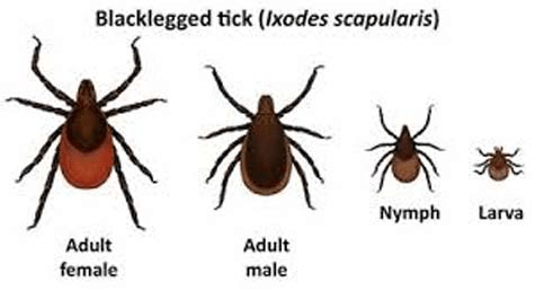Up-tick in Ticks Predicted this Year
By Barbara Heimlich
Editor
Experts are warning to stay alert for ticks, as this year may see a spike in tick-borne diseases, including Lyme disease. The reason? Acorns.
The Connecticut Agricultural Experiment Station (CAES) is reporting a significant increase in acorn abundance that occurred last fall as compared to past years, a phenomenon referred to as either a “mast year” or “bumper crop year,” officials said.
“A bumper crop can drive several ecological processes in our forests, such as the opportunity to help maintain and perpetuate declining oak populations while providing a nutritious food source to sustain wildlife populations throughout the winter months,” said Joseph Barsky, the lead forest researcher for the study.
While scientists aren’t quite sure why bumper crop years occur in oak trees, the phenomenon has a direct impact on wildlife such as rodents and deer. Mice, a common carrier of Lyme disease and a well-known host for ticks, can often see their populations multiply with an abundance of acorns. The acorns act as an important food source for them over winter, according to experts at the CAES.
Some mice have been found to harbor over 200 ticks, with an average of about 23 ticks per mouse, according to experts.
“Masting events can also lead to higher rodent populations, which serve as primary reservoir hosts for numerous human pathogens including the bacteria that causes Lyme disease,” said Dr. Scott Williams, chief scientist for the Connecticut Department of Environmental Science and Forestry.
Dr. Goudarz Molaei, head of the tick testing program at CAES, said that it is likely that the state will see a higher number of ticks infested with Lyme due to the increased acorn production. However, those numbers aren’t yet available to compare over previous years.
“The year after increased acorn production, we will see a lot of ticks feeding on rodents,” Molaei said. “Those ticks are in the larvae stage, as they don’t yet feed on humans. So when they feed on those rodents, they will then be able to pick up more pathogen load, including Lyme disease. We may see a higher prevalence this year, but we don’t yet have the data. I would advise people to be cautious and if bitten by a tick, to get that tick tested.”
Molaei said current testing shows the black legged tick population, the most common vector of Lyme disease, to be around 50% infected with Lyme disease. Those numbers could climb as more tick larvae mature over the next few months.
“Mice are excellent vectors of disease,” Molaei said. “They are common carriers for multiple pathogens that the ticks then carry and spread.”
Thomas Worthley, UConn forestry and extension educator, said that scientists aren’t quite sure why mast years occur, but they seem to happen after extreme negative climate or environmental impacts. Mast year occurrences vary by species and seem to be common among oak trees.
Worthley said that mast seasons remain a poorly understood phenomenon because scientists can’t replicate the amount of variables that may be responsible for them including weather, climate, soil, chemicals and external factors.
“There’s a lot of reasons why they may occur,” Worthley said. “The most common are climate and weather changes, and soil changes over time. They seem to occur more in red oaks than white oaks, but there’s a lot of variability there. Some oaks produce a lot more acorns than other oaks, but there is a noticeable impact on animals including rodents and deer. Those populations often will increase due to the acorn abundance. In turn, you also see a growing population of predatory birds that feed on those populations.”
Molaei said that anyone who is going into the woods this summer should take precautions including wearing pants and long sleeved shirts and using protection including tick spray. Anyone who experiences a tick bite should monitor their symptoms and send it to their municipal health department. The CAES performs all tick testing in the state.
“It’s important to get that tick tested if you begin to experience symptoms, so that we know exactly what you may have,” Molaei said. “There’s an increased prevalence of many different types of tick-borne diseases including babesiosis. (Babesiosis is a disease caused by a parasite that infects red blood cells. It spreads through tick bites, primarily by blacklegged (deer) ticks.) Some people show no symptoms, others have flu-like symptoms and other viral diseases.”
“It’s not just Lyme disease that we are seeing in higher prevalence. We urge everyone to take tick precautions seriously.” Molaei cautioned.
Sources: Connecticut Agricultural Experiment Station; Connecticut Department of Environmental Science and Forestry; Stephen Underwood, Hartford Courant.



